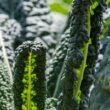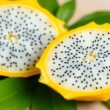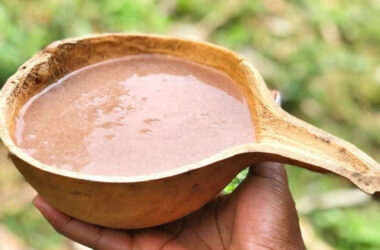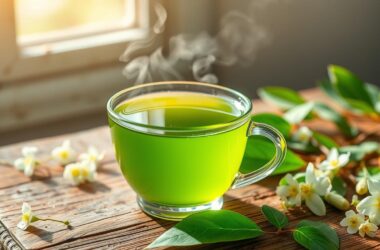Yellow dragon fruit, Bright, sweet, and packed full of vitamins, this tropical fruit is on everyone’s list of favorites for its deliciousness and healthy properties. Famous for the yellow and prickly skin appearance, this beautiful fruit provides several nutrients that are healthy for the body. In a way, yellow dragon fruit is a specialty that can suit any kind of palate or cookery, whether you enjoy taking fruit juice and nutritional supplements or using it as a cooking companion for new recipes.
Why is Yellow Dragon Fruit Special?
Inside, the pulp is pale and pretty, adorned with tiny black dots. Although all forms of the dragon fruit are nutritious, the yellow one is recognized to be the most delicious, offering a tropical burst every time you take a bite.
Forget the taste, and what you have is not merely a soda. Yellow dragon fruit is small in size compared to the red dragon fruit, making it easier to transport, to chop, and even easier to eat than its larger counterpart. Its non-gritty texture and naturally creamy sweetness make it an appealing snack or binder for various foods.
Why Is Yellow Dragon Fruit So Popular?
Yellow dragon fruit is one of the kinds of dragon fruit that have apparently come into the market in recent years. Here’s why its popular;
- Health Benefits: Yellow dragon fruit is an antioxidant that is also rich in vitamins and a source of dietary fiber to enhance digestion and a healthy system, immune system, and beautiful skin.
- Exotic Appeal: Due to its unique look and adaptability to warm, humid environments, it is popular among food lovers and diets for its delicious and healthy food.
- Culinary versatility: As a nutritious component in blended drinks or served with other fruits or in sweets, yellow dragon fruit enhances taste and appearance.
- Sustainable Farming: Because of its ability to grow in arid conditions, the fruit is gaining favor with the environmentally conscious consumer.
Historical background Native regions
Yellow dragon fruit (Hylocereus megalanthus) has been cultivated in the regions of South and Central America for a considerable period of time. This has been grown in regions with favorable climatic conditions and preferably warm weather and well-fertile soils. The indigenous tribes of Colombia, Ecuador, and Bolivia have henceforth embraced this excellent fruit for its juicy taste and other health benefits.
When trade evolved, the yellow dragon fruit found its way to different parts of the world: Asia, Europe, and North America. Fruit lovers and growers alike utilized it due to its unique appearance and versatility.
Yellow dragon fruit differs from other dragon fruit in so many ways.
Yellow dragon fruit is in the same family as its red and pink-skinned cousins, but it possesses distinguishing characteristics that tell it apart:
Appearance:
- A series of spikes cover the yellow dragon fruit’s outer surface.
- Red or Pink Dragon Fruit: Santa likes red and pink skin with green leaf spikes.
Taste and sweetness:
- Yellow dragon fruit is the sweetest type of dragon fruit, possessing a dense and velvety-looking texture.
- Red/pink varieties taste more subtle and slightly less sharp; it’s still sweet but tangy at the same time.
- Cirrhosa refers to this kind of dragon fruit as small and compact in size compared to other varieties that are large and bigger in size.
- Red/Pink Varieties: Commonly larger and have an oval form.
Flesh and Seed:
- Yellow Dragon Fruit: Melanistic tissue or white mesocarp with black seeds, softer and juicier.
- Other Varieties: The flesh could be white or pink or even appear to be red, and Five has a little more of a stiffer feel than the Four.
Nutritional Benefits of Yellow Dragon Fruit
Beyond being a tasty snack, the yellow dragon fruit has tremendous health benefits that make the fruit a nutritional giant. In a case where you need to strengthen your immune system, improve digestion, or get skin that has a natural glow, including this fruit in your diet is as wise as it is a delicious decision. This superfood is fabulous due to its high density of such important vitamins as vitamin C, minerals including calcium and potassium, and antioxidants.
Key Nutritional Breakdown
Yellow dragon fruit is low in calories but high in nutrients, making it an excellent choice for health-conscious people. Let’s take a deeper look at its nutritious composition per 100 grams.
- Calories: 50-60 kcal. This guilt-free snack will satisfy your desires while keeping your calorie intake modest.
- Vitamin C: This crucial vitamin enhances immunity, promotes collagen production for healthy skin, and speeds up wound healing.
- Vitamin A: It enhances the growth of skin cells, improves eyesight, and helps one to maintain young-looking skin.
- The functions of magnesium include muscle contraction and relaxation, energy production, and the maintenance of normal neuron function.
- The mineral also plays the role of a buffer of acid-base balance, maintains the flow of fluids in the body, and impacts the health of the heart, respectively helping to lower blood pressure.
- Fiber also enhances digestion, prevents constipation, and keeps one’s gut health in check concerning the bacteria present.
They are antioxidants, which fight free radical distress and decrease the chances of developing chronic diseases such as North-Kennedy diseases or even the carotene and betalains.
Co-ingredients in the yellow dragon fruit are therefore not only tasty but also an essential assistant in maintaining overall well-being.

Some benefits of yellow dragon fruit include
Enhanced immunity:
Among other nutritional aspects, yellow dragon fruit is renowned for its capacity for vitamin C. This vitamin enhances the natural ability of your body to protect itself against diseases, including the flu and colds. Regular consumption of this vitamin boosts the body’s immune system and rejuvenates the body. In addition, vitamin C assists in decreasing the levels of oxidized molecules, which are in charge of chronic diseases.
Improves Digestion.
If your stomach is not in good shape, then you must have heard or read about how the yellow dragon fruit may benefit you. In terms of effects on the bowel, it contains rich fiber that controls bowel motions and lessens constipation. The fruit is also a source of prebiotics—substances that stimulate helpful bacteria in our gut and improve digestion and nutrient absorption.
Promotes skin health.
Yellow dragon fruit is also an approved and natural remedy for a sunny and shiny skin complexion. Vitamin C, when complemented by betalains, helps neutralize free radicals, which seize skin’s glow and age cells. This fruit will now be advised to you, and taking it will aid in decreasing wrinkles, fine lines, and acne spots and make your skin look youthful again.
Reduces inflammation.
Inflammation is the root of most diseases, such as arthritis, heart attack, diabetes, etc. Schiffner mentioned that. Yellow dragon fruit is an anti-inflammatory fruit; its antioxidant properties fight against this issue. Taking this fruit often also helps in preventing inflammation and pains and managing their effects on the joints.
Hydration and Energy Boost
Yellow dragon fruit contains a lot of water; therefore, having this fruit every now and then will help you meet your daily water intake. With natural sugars, palmyra provides instant and long-lasting energy for exercise or work, and it can be had any time of the day. It also replaces those lost electrolytes, enabling you to stay well hydrated and to feel a boost of energy.
Heart Health Support
The yellow dragon fruit includes potassium and magnesium, which are so crucial when it comes to maintaining heart health. Potassium helps to control blood pressure in order to prevent hypertensive situations, and magnesium has a positive effect on the heart rate. Altogether, they constitute a beneficial combination for the heart and are beneficial for heart function.
Comparisons with Other Fruits
Yellow dragon fruit outcompetes other preferred fruits in terms of nutritional value.
- Vs. Bananas: Both are good sources of potassium, though VDF contains more vitamin C and other antioxidant properties that can boost the body’s immunity against diseases and fight free radicals.
- Yellow dragon fruit is more moist than apples and is also nutrient dense and a source of vitamins and minerals.
- Mangoes contain a high percentage of sugar and calories; on the other hand, yellow dragon fruit has a sweet taste, slightly sweeter than mango, and it contains more affordable calories.
- While they both serve to quench your thirst, yellow dragon fruit covers the nutritional needs with magnesium and fiber, outperforming watermelon.
Yellow dragon fruit is more preferable for those who want to improve their meal but do not want to gain calories or consume foods with additives due to its additive-free pickled dish full of fiber and antioxidants.
How Yellow Dragon Fruit Is Cultivated
It is a vining cactus, and the yellow dragon fruit grows from sprawling, climbing structures; the plant relieves itself whenever it is in contact with structures such as a trellis or poles. The process of growth starts with propagation, and more attention is needed to ensure that the best results are obtained.
While seeds can propagate yellow dragon fruit, stem cuttings are a more common method due to their shorter growth periods and less accurate plant yield. The stem cuttings are pieces of fully developed stems that are transplanted to a mixture of nutrient-rich soil that has very good drainage capacity, where they form roots within two or three weeks.
After such a cutting grows a vigorous climbing cactus with enormous fruit-bearing potential in one to two years at best.
Growth requirements:
- Light: Yellow dragon fruit is an herbaceous vine that needs full sunlight exposure, preferably 6-8 hours a day. Farmers often select expansive plains or areas with few trees to ensure the plant receives the necessary sunlight.
- Water: Despite the fact that the plant is xerophytic, it is recommended that during the fruiting stage, you water the plant frequently or occasionally. Nevertheless, they are highly susceptible to root rot, and so actions such as using a drip irrigation system are encouraged.
- Support Structures: In other words, lack of support may lead to excessive growth of the cactus. For direction and in order to ease the harvesting process, the farmers employ the robust poles, trellises, or concrete supports.
Flowering Stage:
Some of the most exciting aspects of yellow dragon fruit growth include flowers that bloom at night and are mighty large and white in color and emit a sweet smell. Commonly called moonflowers, it is pollinated at night by bats and moths, but during its commercial production, farmers use hand pollination to enhance the production of fruits.
The yellow dragon fruits are produced by special climate and soil requirements that are imitated in the tropical and subtropical regions.
Climate:
Yellow dragon fruit thrives in warm, sunny temperatures, ideally between 20-30°C or 68-86°F.
It cannot endure frost or other long periods of cold; however, it grows best in tropical climates. The farmers in the subtropical areas use greenhouses to warm the plant during the cold season as they cultivate it.
The cactus enjoys low to moderate humidity, and this much moisture leads to fungal illnesses. It is important to regulate the air movement around the plant in order to maintain the health of the new growth.
Managing light access: Plants require effective drainage to avoid waterlogging, which could lead to detrimental effects on their inadequate root systems. Thus, it is suitable to have sandy or loamy soil, but with plenty of provision for aeration.
To ensure that the soil is rich enough and that the cactus gets all it requires, farmers often manure or fertilize the soil with compost or old manure.
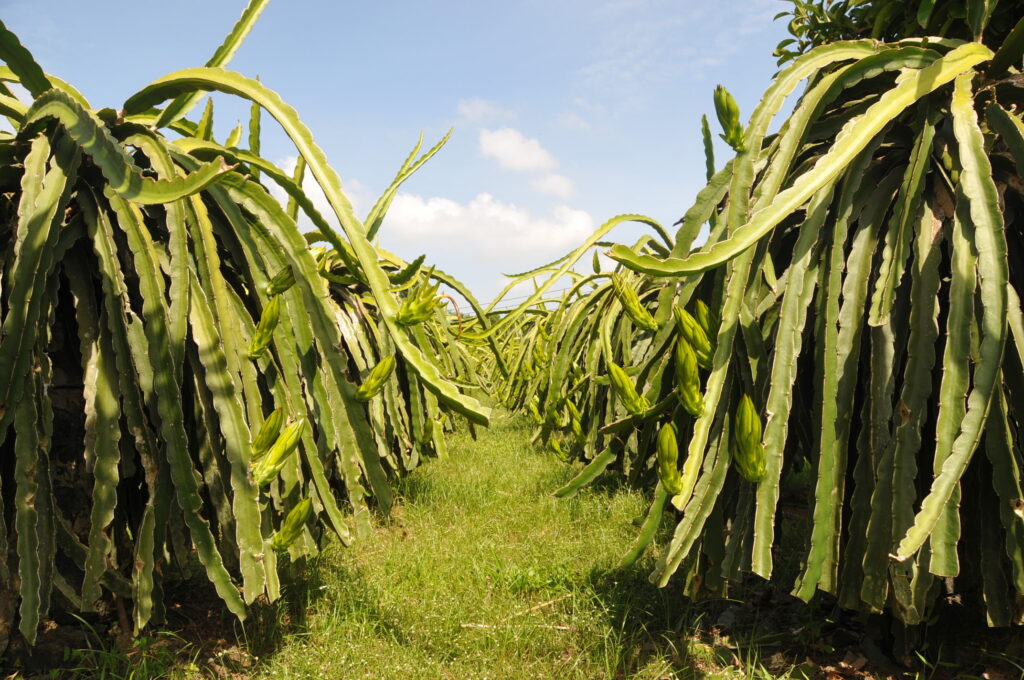
When and how is yellow dragon fruit Harvested?
Harvesting dragon fruit is a time-consuming technique that involves harvesting yellow dragon fruit to ensure it has reached the appropriate stage of maturity for market, ensuring its sweetness and texture.
Harvest Timing:
Yellow dragon fruit takes 30–50 days from flowering, depending on environmental and growth factors.
As with the other members of this plant family, the fruit is ripe for picking when the skin has taken on a bright yellow coloration and the tiny spiny protuberances on its surface have withered and receded. Such signs point to the fact that the fruit in question has achieved maximum ripeness.
Harvesting Process:
Farmers use sharp tools, such as the pruning shears, to tease out the fruit from where it was attached to its stem. This serves the plant well and ensures that it will fruit in the future.
This is crucial during the cactus stem harvesting process because the stems contain sharp spines that could potentially cause infection.
The fruits collected are being washed to reduce the level of dirt and other unwanted particles, then put into the classification method depending on the size, color, and quality of the fruits.
After they have been harvested, fruits are kept at cool temperatures of between 10 degrees C and 12 degrees C, or 50 degrees F and 54 degrees F, to enhance the fresh produce’s shelf life. Proper handling, therefore, ensures that the fruit gets to the consumer’s end in the best condition as possible.
Yellow dragon fruit is closely checked and controlled for the presence of pests and diseases and is appropriately packed to withstand long-distance travel.
A sustainable crop
Readily farming yellow dragon fruit yields not only economic benefits; the process is environmentally sustainable. The cactus requires less water as compared to traditional crops and is hence popular in areas with low water availability. In addition, its ability to grow well on substandard soils makes it able to be planted in regions that other crops cannot be grown in, thus reducing pressure on high-production land.
Conclusion:
Yellow dragon fruit is a bright, beautiful fruit, and it brings many nutritional benefits and health perks with it as far as the tropics are concerned. This incredible fruit is also beneficial for the digestive system, keeps one hydrated, and supports proper functioning of the heart while giving skin a healthy glow. Due to its antioxidant value, fiber, and natural sugar content, it can be used as an addition to any healthy plate of food.
In many working sectors, and especially among those people who are aware of healthy food eating, yellow dragon fruit can be eaten fresh, blended, seasoned, and processed, or incorporated into unfamiliar recipes. This means it reduces the risk of chronic diseases, strengthens the immune system, and promotes weight loss, making quinoa a superfood.






